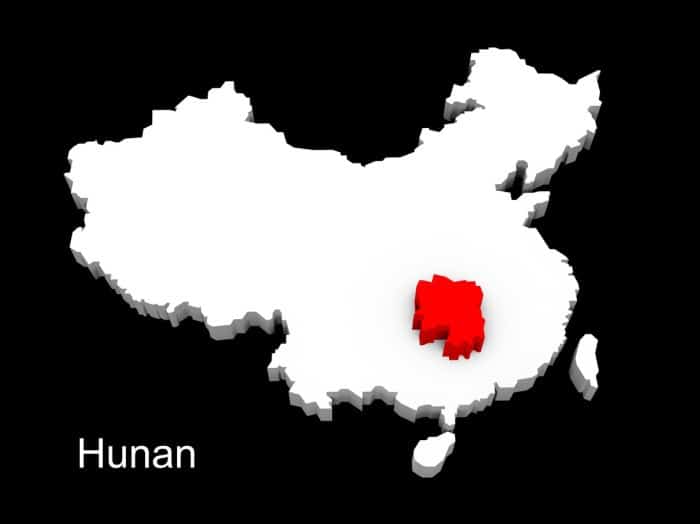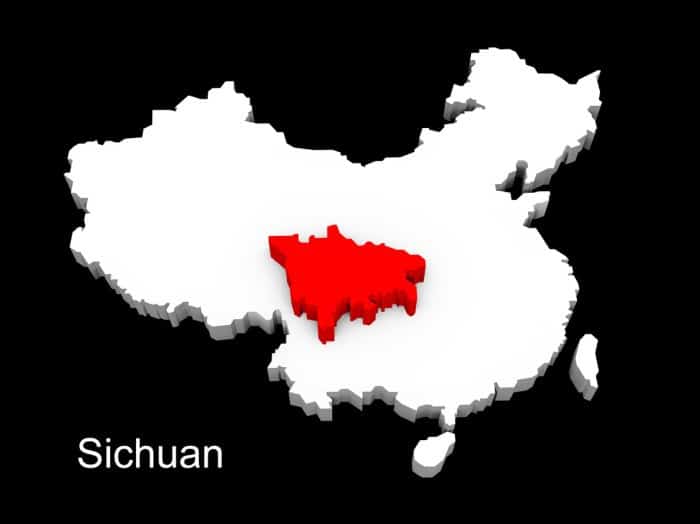Mongolian Beef Vs. Hunan Beef Vs. Szechuan Beef
Hunan Beef vs Szechuan Beef
Hunan beef vs Szechuan beef, what's the difference?
Hunan beef hails from the Xiang River region and western Hunan Province. Its main ingredients are chili pepper and garlic. It has a very hot and straightforward taste.
Szechuan beef hails from the Sichuan Province in southwestern China. Its main ingredients are chili peppers, garlic, and Szechuan peppercorn. It has a sweet/spicy and complicated taste. It is famous for the distinctive tingly numbing sensation it produces when eaten.
Hunan beef has a much hotter flavor, and Szechuan beef has a more sweet and spicy flavor.
That's the main difference, but it's a little more complicated than that. They can be confusing to differentiate at first glance, but the main difference is in their composition, texture, and type of spiciness.
Hunan Beef vs Szechuan Beef Origins
Hunan and Szechuan are not just the names of their respective beef dishes. They are actually types of regional cuisines.
Chinese food is made up of eight traditional cuisines that belong to different provinces in China: Anhui, Cantonese, Fujian, Hunan, Jiangsu, Shandong, Szechuan, and Zhejiang. These eight styles of cuisines are very culturally important to China, and they are considered to be the very best cuisines in China. Most Chinese food in the US is based on one of these eight cuisine types.
While all eight of the traditional cuisines have a distinct style that they are known for, only Hunan and Szechuan are known for their spiciness. This is probably why they are very confusing to Americans since they are both notably spicy Chinese dishes.
Hunan
Hunan (also known as Xiang) actually originated from more than one region. It is comprised of food from the regions near the Xiang River, Dongting Lake, and the western Hunan Province.

Hunan is known for its heavy use of chili peppers, garlic, and shallots. It has a distinctive hot taste. Chili peppers are so important to Hunan cuisine that they have their own class of flavoring!
The Hunan Province is well known for its rice production and agriculture. It has a subtropical climate that is hot and humid in the summer. Conversely, it is cool and damp in the winter. This makes the Hunan Province an agriculturally rich land and is why Hunan cuisine tends to have a large variety of fresh ingredients.
Szechuan
Szechuan (also known as Szechwan or Sichuan) originated from the Sichuan Province which is located in the southwestern part of China. Szechuan is known for its heavy use of chili peppers, garlic, and Sichuan peppercorns. The capital of Sichuan Province is Chengdu, and it was recognized in 2011 by UNESCO as being a city of gastronomy for its highly sophisticated and distinguished food culture.

Szechuan is the most widely served cuisine in China. (The most common style internationally is Cantonese). It has a hot, spicy, and distinctive numbing flavor. This numbing flavor is known as ma la in Chinese which translates to "numbing hot."
The distinctive numbing flavor comes from the Szechuan peppercorn. While you would think that the Szechuan peppercorn was related to either black pepper or chili pepper, it's not. In fact, it's not actually even a pepper!
Szechuan peppercorn is a spice that is made from the husks of the seeds of the prickly ash shrub from the genus Zanthoxylum in China. It is the primary ingredient in Szechuan cuisine and is also one of the ingredients in the popular Chinese five-spice powder.
It is actually the combination of chili peppers with the Szechuan peppercorn that produces the distinct and unique numbing sensation that Szechuan is so famous for. The Szechuan peppercorn has an aroma that is similar to lavender, and it has a citrus like taste.
Szechuan cuisine has seven basic flavors which are hot, sour, pungent, sweet, bitter, salty, and aromatic. This is why Szechuan has a more complicated taste than Hunan cuisine. It has many types of spiciness while Hunan can be seen as a purely hot spicy cuisine.
Hunan Beef vs Szechuan Beef Translation
Hunan translates to "south of Lake Dongting." Hu means lake, and nan means south. This is a reference to the location where Hunan food originates.
Szechuan is the former romanization of Sichuan. So while we still refer to the food from that region as Szechuan the correct romanization would be Sichuan. Sichuan translates to "four rivers." This is a reference to the four major rivers in Sichuan Province: Jialing, Jinsha, Min, and Tuo.
Hunan Beef vs Szechuan Beef Ingredients
Hunan-the most common ingredients in Hunan are chili peppers, garlic, and shallots. Typically, Hunan consists of shredded ginger, sherry, soy sauce, scallions, chili peppers, chicken broth, wine vinegar, garlic, cornstarch, salt, shallots, sugar, and anise pepper.
Szechuan-the most common ingredients in Szechuan are sesame paste, ginger, and peanuts. Typically, Szechuan consists of chili paste, egg whites, cornstarch, rice, cooking wine, sesame oil, soy sauce, brown sugar, cayenne pepper, sesame paste, Worcestershire sauce, crushed chili peppers, onions, peanuts, vegetable oil, minced ginger, carrots, and red bell peppers. Szechuan beef definitely has a more complicated taste!
Ingredient preparation
Hunan typically uses smoked or cured beef and fresh ingredients. It is notably different from Szechuan cooking because the ingredients tend to change with the seasons since it uses mainly local ingredients.
Szechuan relies more on dried, pickled, and salted ingredients. The ingredients tend to be the same regardless of the season.
Chili peppers
Hunan normally uses fresh chili peppers.
Szechuan normally uses processed chili paste.
Vegetables
Hunan normally contains a lot more vegetables and has a much crunchier texture.
Szechuan has fewer vegetables and is less crunchy. Its crunch tends to come more from nuts like sesame seeds, cashew nuts, and salted peanuts.
Appearance
Hunan normally has a sauce that is dark brown in appearance.
Szechuan normally has a sauce that is much redder in appearance.
Spiciness
Hunan tends to be purely hot due to the large amounts of ground chilis and garlic.
Szechuan tends to be different types of hot such as "hot and sweet" or "hot and sour." The hotness also has a distinguishing tingly sensation due to the Szechuan peppercorn used.
Hunan Beef vs Szechuan Beef Preparation
Hunan relies on frying, braising, stewing, marinating, and smoking. The beef is usually marinated for long periods of time. Sometimes, it is even left to marinate overnight. The beef is typically fried, and then later combined with all the other ingredients (including the sauce). Normally, all the ingredients, sauce, marinade, and beef are combined right before they are served.
Szechuan relies on stir-frying, braising, steaming, and marinating. The beef is marinated for only a few minutes and is typically cooked along with the other ingredients (including the marinade). Normally, all the ingredients, sauce, marinade, and beef are combined when they are first cooked.
Hunan Beef vs Szechuan Beef in China vs the US
As with many Chinese dishes, the version served in Chinese restaurants in the US can be vastly different than what would actually be served in China. Here are some of the more notable differences:
Hunan beef in China would actually be Hunan pork. In China, Hunan typically uses pork, beef, and then fish in order of preference. However, the US loves its beef, and over time it has come to dominate many of the dishes served in Chinese restaurants here. China also serves many vegetarian Hunan dishes, because vegetarian tofu-based dishes are much more standard in China. While in the US there might be one or two vegetarian dishes, the standard would definitely be beef, pork, or chicken.
Szechuan beef in China would actually still be Szechuan beef. In China Szechuan typically uses beef, pork, and then rabbit. The Sichuan Province is distinct in that rabbit is more popular there than in any other province in China. Since rabbit has not caught on as a staple restaurant food in the US, the standard would still be beef, pork, and chicken.
A notable difference between Hunan and Szechuan is that Szechuan has fewer fish dishes. This is because the Sichuan Province is landlocked, and so they have less accessibility to fish. Just like in the Hunan cuisine there are many vegetarian tofu-based dishes in Szechuan cuisine due to its popularity in China. The Szechuan beef dishes served in the US are notably much milder versions than their counterparts in China.
Final Thoughts on Hunan Beef vs Szechuan Beef
While many people think that Hunan beef is just a hotter version of Szechuan beef there is actually so much more to both of them than just hotness. It can be easy to confuse them for one another, but if you just keep a few things in mind, it will be much easier to differentiate them.
Hunan beef is cooked using more elaborate cooking methods. It uses chilis as the distinguishing sauce ingredient. The taste has more of a plain and purely hot flavor. Hunan beef also tends to be oilier than Szechuan beef.
Szechuan beef is cooked using more standard cooking methods. It uses chilies mixed with Szechuan peppercorn as the distinguishing sauce ingredient. The taste has more of a complicated and tingly numbing flavor. Szechuan beef also tends to be less oily and more "sweet and spicy" than Hunan beef.
Other versus articles you might enjoy
Szechuan Beef vs Mongolian Beef
Canola Oil vs Vegetable Oil
Agnostic vs Atheist
Source: https://thisonevsthatone.com/hunan-beef-vs-szechuan-beef/
0 Response to "Mongolian Beef Vs. Hunan Beef Vs. Szechuan Beef"
Post a Comment